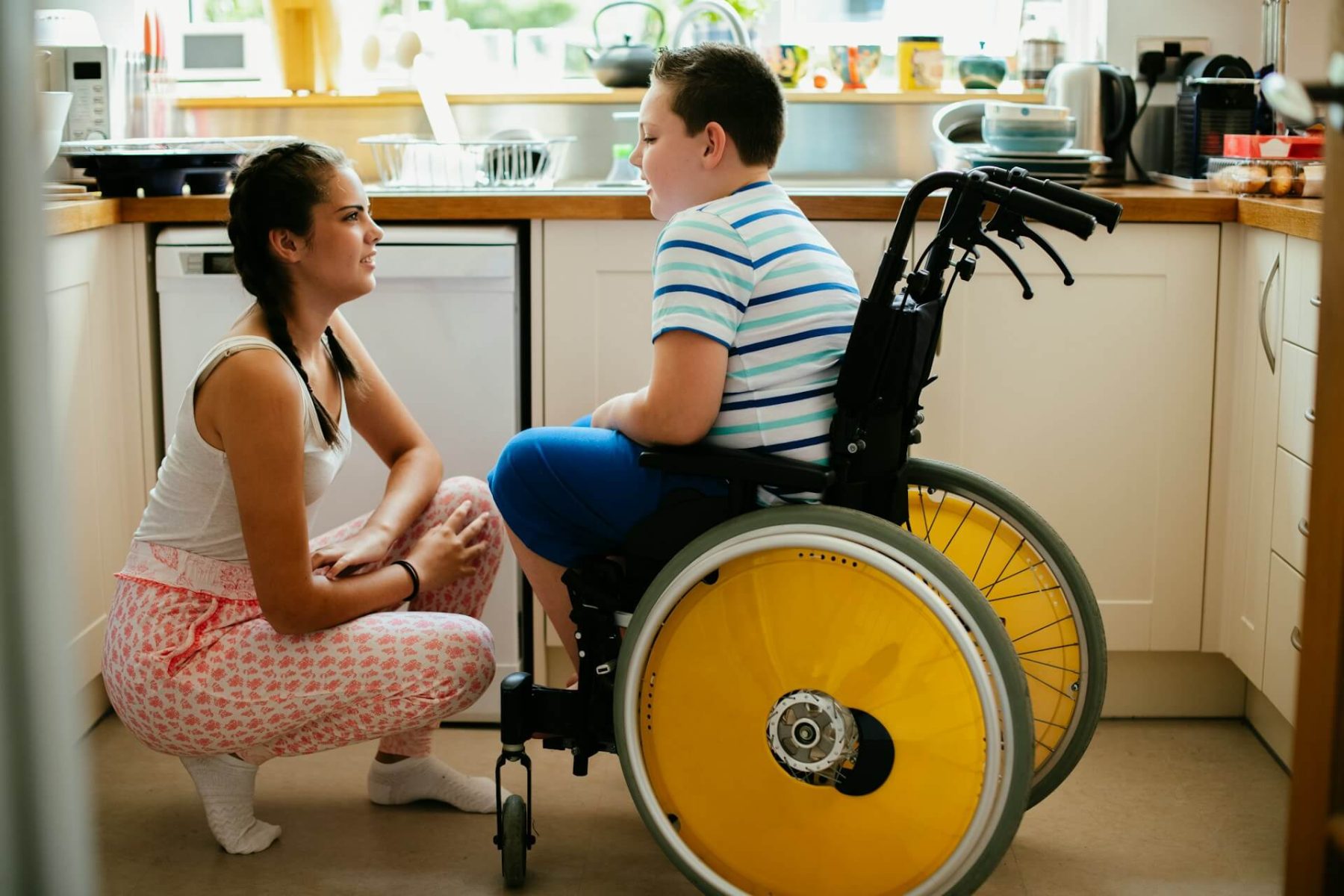The journey through Australia’s National Disability Insurance Scheme (NDIS) begins with your planning meeting – a pivotal conversation that shapes the support you’ll receive. For many Cairns residents, this meeting can feel overwhelming. Will you remember to mention all your needs? Could you miss out on crucial funding? How do you ensure the plan truly reflects your life and goals?
These concerns are entirely valid. Your NDIS plan will influence your daily life for the next 12 months, making thorough preparation essential. This comprehensive guide will walk you through every step of preparing for your NDIS planning meeting, ensuring you feel confident and empowered when discussing your support needs.
What Is an NDIS Planning Meeting and Why Is It Critical to Your Support?
An NDIS planning meeting is a structured discussion between you (the participant), your support network, and an NDIS representative – either a planner or Local Area Coordinator (LAC). This crucial conversation determines the reasonable and necessary supports you’ll receive funding for, designed to help you achieve your personal goals and navigate daily life with your disability.
The meeting’s importance cannot be overstated. It’s your opportunity to articulate your needs, challenges, and aspirations, translating them into a personalised support plan with appropriate funding across core supports, capacity building, and capital expenses. Every detail matters – from the frequency of therapy sessions to the specific equipment that could enhance your independence.
For Cairns residents, this meeting also addresses unique regional challenges, such as accessing specialists in Far North Queensland or adapting to the tropical climate. A well-prepared participant is far more likely to secure a comprehensive plan that genuinely meets their needs.
What Documentation Should You Gather Before Your NDIS Planning Meeting?
Gathering appropriate evidence is perhaps the most critical preparation step. The right documentation substantiates your support requirements and provides a clear picture of how your disability impacts daily life.
Essential Documentation Checklist
| Required Documents | Purpose | Tips for Cairns Residents |
|---|---|---|
| Medical and allied health reports | Demonstrates disability impact and support needs | Ensure reports are recent (within 6 months) and from NDIS-recognised professionals |
| Current support records | Shows existing formal and informal supports | Include details of local Cairns-based services currently used |
| Daily activity logs | Illustrates everyday challenges | Document how tropical climate affects your condition if relevant |
| Assistive technology quotes | Justifies equipment requests | Source from local suppliers where possible |
| Financial details | Required if self-managing funds | Include bank account information |
| Identification documents | Verifies your identity | Bring your NDIS participant number and correspondence |
When collecting medical evidence, focus on reports that clearly outline your functional capacity – how your disability affects what you can and cannot do independently. For example, an occupational therapy assessment might detail modifications needed in your home to improve accessibility, while a psychologist’s report could highlight support requirements for community participation.
Remember that evidence should be current, comprehensive, and directly relevant to your support needs. Outdated reports may not accurately reflect your present situation, potentially resulting in inadequate funding.
How Should You Articulate Your Goals for an NDIS Planning Meeting?
Your goals form the foundation of your NDIS plan, guiding how funding is allocated. Effective goal-setting involves reflection on what matters most to you across different life domains.
The SMART framework provides an excellent structure for developing compelling goals:
- Specific: Clearly defined outcomes
- Measurable: Indicators to track progress
- Achievable: Realistic within your circumstances
- Relevant: Meaningful to your personal situation
- Time-bound: With a clear timeframe
Consider both short-term goals (achievable within 12 months) and long-term aspirations. Examples might include:
- “To develop independent meal preparation skills within six months through weekly cooking sessions with a support worker”
- “To increase community participation by attending two local social groups in Cairns each month with initial support”
- “To improve mobility around my home by implementing recommended modifications within three months”
Link each goal directly to the supports needed to achieve it. For instance, if your goal involves improved mobility, you might require physiotherapy sessions, specific equipment, or home modifications.
Resources like the “Mapping My World” pre-planning booklet can help structure your goals effectively. Take time to reflect on what independence, community participation, and wellbeing mean specifically for you.
Who Should Attend Your NDIS Planning Meeting with You?
While you’re the central focus of the planning meeting, bringing supportive people can significantly enhance the conversation. Consider including:
- Family members who understand your daily challenges
- Close friends who can provide perspective on your needs
- Advocates who can help articulate your requirements
- Support workers with insight into your functional capacity
- Allied health professionals who can explain complex support needs
The ideal support person combines emotional reassurance with practical assistance. They might take notes, prompt you to elaborate on key points, or request clarifications from the planner. Their role is to ensure your voice remains central while helping you communicate comprehensively.
For Cairns residents who might need to travel to meetings, consider whether support people can attend in person or participate remotely. The NDIS can arrange interpreters or TTY services if required for communication access.
Before the meeting, brief your support people on your goals and priorities. Clarify how they can best assist – perhaps by helping you stay focused if you become overwhelmed, or by providing additional context when discussing complex needs.
What Should You Expect During Your NDIS Planning Meeting?
Understanding the meeting structure helps reduce anxiety and ensures you cover all essential points. A typical NDIS planning meeting follows several stages:
- Introductions and overview: The planner explains the meeting purpose and process.
- Discussion of your current situation: Including living arrangements, existing supports, and daily challenges.
- Goal exploration: Examining your short and long-term aspirations.
- Support identification: Determining what reasonable and necessary supports will help achieve your goals.
- Plan management preferences: Discussing how you’d like your funding managed.
- Next steps: Clarifying the timeline for plan approval and implementation.
Be prepared to discuss how your disability impacts various life domains, including:
- Daily personal activities
- Home maintenance and domestic tasks
- Community participation
- Education or employment goals
- Health and wellbeing maintenance
The planner will ask specific questions to understand your support needs, such as “What tasks do you struggle with independently?” or “How would your daily life change if current supports were withdrawn?” Answer comprehensively, using concrete examples to illustrate your needs.
You can request your preferred meeting format – face-to-face, by phone, or virtual – and choose a comfortable location, such as your home or a local NDIS office in Cairns.
How Should You Follow Up After Your NDIS Planning Meeting?
The post-meeting period is crucial for ensuring your plan accurately reflects what was discussed. Once you receive your draft plan:
- Review thoroughly: Check that all discussed supports are included and adequately funded.
- Identify discrepancies: Note any omissions or funding shortfalls.
- Request clarification: If parts of the plan seem unclear or incorrect.
- Consider seeking advice: From disability advocates if you’re concerned about aspects of the plan.
If you believe important supports have been overlooked or insufficiently funded, you can request a review. For example, if you requested $15,000 for specific home modifications but received $10,000, you can challenge this with supporting quotes and evidence.
Once your plan is approved, promptly activate your supports by:
- Contacting registered providers in Cairns.
- Setting up your myNDIS portal to track expenditures.
- Scheduling initial sessions with key support providers.
Remember that plans are typically reviewed annually, but you can request adjustments if your circumstances change significantly – for instance, if your health deteriorates or you relocate within Queensland.
Addressing Unique Challenges for Cairns Residents
Living in Far North Queensland presents distinctive considerations for your NDIS plan:
Provider Availability
Cairns has a growing but limited pool of specialist providers. Your plan should account for potential travel to access certain specialists, or incorporate telehealth options where appropriate.
Climate Considerations
The tropical climate may affect your disability management. Discuss how heat and humidity impact your condition and what additional supports might help (e.g., heat-resistant mobility equipment, air-conditioned transportation).
Distance and Transportation
If you live in outlying areas around Cairns, ensure your plan includes adequate transport funding for accessing services, particularly during the wet season when travel can be challenging.
Preparing for Success: Your Final Checklist
As your meeting approaches, use this final checklist to ensure you’re fully prepared:
- [ ] All relevant documentation gathered and organised.
- [ ] Goals clearly defined using the SMART framework.
- [ ] Support people briefed and meeting logistics confirmed.
- [ ] Questions prepared for the planner.
- [ ] Current supports and gaps identified.
- [ ] Preferred plan management option decided.
- [ ] Notes on regional-specific needs documented.
Conclusion: Empowering Your NDIS Journey
A well-prepared NDIS planning meeting sets the foundation for a support plan that genuinely enhances your quality of life. By thoroughly documenting your needs, clearly articulating your goals, and engaging appropriate support, you significantly increase your chances of securing funding that matches your requirements.
Remember that this process is about your life, your aspirations, and your wellbeing. While preparation takes effort, it’s an investment in creating a plan that truly works for you – enabling greater independence, participation, and fulfilment in Cairns and beyond.
Have questions? Need support? Reach out to us here at Advanced Disability Management.
How long does an NDIS planning meeting usually take?
Most NDIS planning meetings take between 1-2 hours, depending on the complexity of your needs. For participants with multiple disabilities or complex support requirements, the meeting may take longer or be conducted across multiple sessions.
What if I forget to mention something important during my planning meeting?
If you realise you’ve overlooked something important, contact your LAC or planner as soon as possible after the meeting. Before the plan is finalised, additional information can often be incorporated. After finalisation, you may need to request a plan review.
Can I change my mind about how my plan is managed after it’s approved?
Yes, you can request a change to your plan management type through a plan review. This is particularly relevant if you initially chose agency management but later feel confident to self-manage, or if your circumstances change and you require additional support with management.
How can I prepare if I have difficulty communicating my needs?
If communication is challenging, consider creating a pre-written statement or using communication aids. You might also develop a comprehensive participant statement with help from a support person before the meeting, or bring someone who understands your communication style to interpret.
What happens if I disagree with my approved NDIS plan?
If you believe your approved plan doesn’t adequately address your needs, you can request an internal review within three months of receiving it. This involves submitting evidence explaining why certain supports should be reconsidered. If the internal review is unsuccessful, you can apply to the Administrative Appeals Tribunal for an external review.



